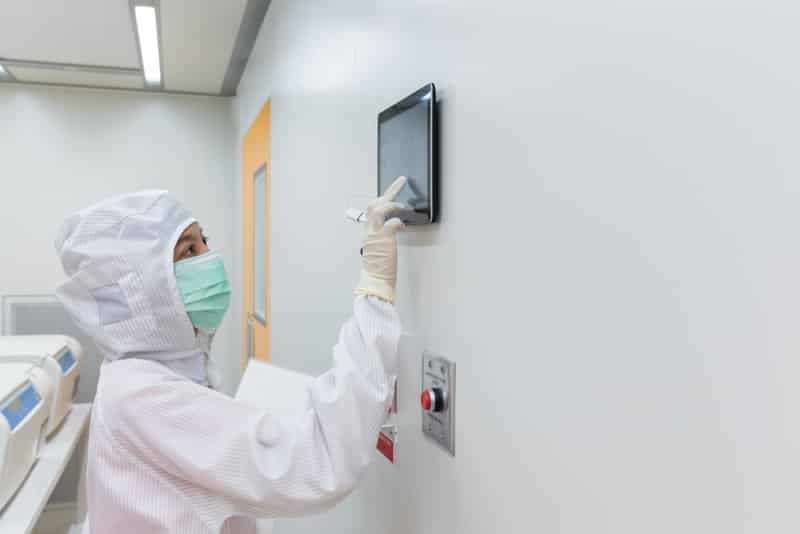Newsletter Signup - Under Article / In Page
"*" indicates required fields
Despite vast amounts of funding entering the cell and gene therapy field, the manufacture of these therapies is held back by skill shortages. Increasing training programs and automation could form the solution.
The cell and gene therapy fields enjoyed their best-ever funding yield in the first half of 2021, with €12.2B ($14.1B) netted globally. However, the biotech community is also fighting on several fronts to address a shortage of talent in cell and gene therapies and bridge critical skills gaps in its manufacturing sector.
“The bottom line is that this is a young industry that is experiencing exponential growth,” said Amy Lamperti, Vice-President of Commercialization at BioCentriq, a cell and gene therapy manufacturing center in the US.
“There are a limited number of people who have been able to acquire the skills associated with manufacturing these novel and emerging therapies, so those people come at a premium.”
While big pharma firms are willing and able to pay these costs, life has been harder for growing and mid-sized biotechs as well as contract development and manufacturing companies.
Commercial companies, industry organizations, and academic institutions have launched initiatives to deal with the lack of skilled and experienced staff and are creating training courses, mentoring programs, and opportunities to enable the labor force to gain practical experience.
Firms are also increasingly looking to automate their manufacturing processes in the hope that it will not only reduce their reliance on skilled labor but also tackle the high costs associated with cell and gene therapies.
BioCentriq’s approach to overcome this challenge is to be part of a ‘talent factory’ with access to students coming out of a Master’s program in cell and gene therapy at the New Jersey Institute of Technology.
“We can also leverage the same workforce development programs we offer our clients to train individuals who come from other sectors on the unique aspects of cell and gene therapy,” Lamperti said.
Earlier this month, Biocentriq teamed up with the US firm Terumo Blood and Cell Technologies to accelerate the adoption of automated manufacturing, which can reduce the human input required for culturing cells.
US biotech Orgenesis, which focuses on personalized cell and gene therapies, is also looking towards automation to deal with skill shortages. Its CEO, Vered Caplan, said training employees for aseptic processing work in clean rooms was one of the major bottlenecks in the field.
“The knowledge needed for cell and gene therapy processing is very specialized, resulting in a vast shortage of skilled candidates. The scarcity of skilled labor has also led us to invest heavily in automation as a potential solution.”

Her company’s long-term goal is to deploy automated systems in its mobile processing units and labs. “This will not only lower the significance of any skilled labor bottleneck, but it will also hopefully significantly lower the cost of cell and gene therapies, making them available, accessible, and affordable to all,” Caplan explained.
In addition, the company has set up a rigorous training program, known informally as the Orgenesis Academy, that has professionally trained more than 250 people over the past four years. “The program is global in nature and is in the final stages of accreditation at the first university in Europe,” said Caplan. “We expect to expand it globally within a few years.”
Competition for existing talent within the industry remains fierce, according to Queenie Jang, CEO of the International Society for Cell and Gene Therapy (ISTC), which is based in Canada.
“At the senior management level, we are seeing rapid turnover and movement as the top talent is highly sought after and frequently poached. This creates instability and can have a detrimental effect on long-term productivity,” she explained. “Additionally, companies are just not able to hire the number of skilled individuals needed, which is slowing development of new products.”
In an effort to provide support to the industry, the ISTC has an early-stage professionals committee that is responsible for its extensive mentoring program. Next January, the ISTC will also launch a series of joint educational programs to nurture the next generation of manufacturing talent.
In Europe, meanwhile, a lot of talented staff are attracted to the US where salaries are higher. Those that do stay in Europe often cluster in biotech hubs in wealthy countries including the UK, Germany, and Switzerland, leaving less talent elsewhere.
According to a report this year by the UK cell therapy organization Cell and Gene Therapy Catapult, demand for skills in cell and gene therapy called for urgent action on recruitment and retention of talent. The report predicted that available roles in UK cell and gene therapy manufacturing could more than double to 10,000 by 2026.
To tackle this soaring demand, the UK’s Advanced Therapies and Skills Training Network, which is coordinated by Catapult and backed by a €5.5M (£4.7M) UK government grant, opened three national training centers in June. These aim to provide on-site and virtual reality training in the advanced therapy industry, and address the UK need for cell and gene therapy manufacturing.
Making recruitment easier for biotech companies doesn’t just bring commercial benefits, but can also improve our health at large, especially during emergencies like pandemics.
“The impact on the industry is in the time it takes to bring these life-altering, and in many instances life-saving therapies to market,” Lamperti said. “There’s a lot of discussion in the media about the capacity constraints that exist because of vaccine production.”
“When you break that down it becomes quickly apparent that a lack of physical space and equipment is not the gating factor for increasing capacity; it’s the people who know how to run the equipment and do the work required to use that space.”
9 November 2021: Correction made to gender of Vered Caplan at Orgenesisrnrn24 November 2021: Cell and Gene Therapy Catapult statistics updated to reflect latest datarnrnCover image via Elena Resko. Text body image via Shutterstock.
Partnering 2030: FME Industries Report







